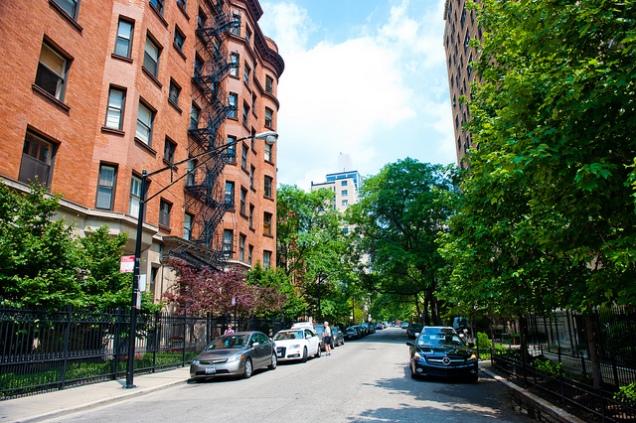What is the cost of losing everyday contact with natural spaces in favour of more urban development? Find out more in this blog by the #EFUF2016 invited blogger, Tara Zupančič, MPH.
I was twelve years old when I first visited Slovenia. I spent my summer on the mountain where my father grew up. Among 300 acres of trees, I would love to watch the mist lift from the valley floor into the ether. My soul felt alive there, and like many people, I have grown to depend on nature to hoist my spirit, provide refuge from the heat, and restore my sense of home on this planet. So when I tell people that I study the relationship between nature and health, I’m often met with an incredulous look. Isn’t it well established that nature provides the very foundation of human health? My head bobs yes, as I explain myself.
The push for research on the health benefits of nature is related to our increasingly urban existence. Competing needs for roads, houses, and industry can easily overtake greener pastures. Nature is typically viewed as something beyond urban borders and not part of our daily city life. As cities expand their borders to house the majority of the world’s population, we need to ask, what is the cost of losing everyday contact with natural spaces in favour of more urban development? In the face of competing land use needs, is a stand of trees that important?
Despite advances in health care, our lifelong health is largely determined by our social and economic position and the settings where we live, work, and play. A strong and growing body of evidence shows that everyday contact with urban nature is critical to our well-being and is significantly associated with healthier births, as well as reduced mortality, obesity, chronic disease, depression and anxiety. Access to nature is especially important for children and is significantly associated with increased play, physical activity, and cognitive and motor development.

Unfortunately, the ability to enjoy the benefits of nature often falls along social and economic divides, deepening health inequalities in cities. This means that poor health, disproportionately borne by those who are socioeconomically disadvantaged, is compounded by greater environmental burdens where they live. For example, a European systematic review showed that socially disadvantaged children commonly suffer from multiple and cumulative health burdens related to poor quality housing, greater exposure to traffic and industrial pollution, and a lack of healthy, natural spaces where they live. These children are more susceptible to harm from adverse environmental conditions because they often lack protective factors such as adequate nutrition, opportunity for play and essential health care.
Tackling health inequalities is a major global health priority, and ensuring equitable access to nature must be part of that strategy. While exposure to nature can benefit everyone, there is consistent evidence that the benefits are strongest among socioeconomically disadvantaged groups.
The association between green space and reduced mortality has been found to be strongest in the most socioeconomically deprived urban areas. Increased green space exposure also appears to decrease the effect of income deprivation on all-cause and cardiovascular mortality. Multiple studies on green space exposure and birth have found that the strongest positive associations are found among the most socially disadvantaged. It is not clear why these stronger associations exist but emerging evidence suggests that nature may provide a buffer from difficult life circumstances, and be protective against stress as a setting for emotional, physical, and social support.
The benefits of everyday contact with nature are vast and there is a need to ensure that this nurturing from nature is not determined by a person’s wealth, income, or ability to leave the city. Time in nature is an essential right of childhood and sets a critical foundation for lifelong health. As an increasingly urban planet, we need to configure our cities to maximize nature in every nook and cranny and guarantee everyone is free to benefit from it. Instead of planning the apportioning of trees amid sprawling cites, there is an opportunity to plan vibrant cities amid great forest canopies. Our health depends on it.
Studies referenced:
Bolte, G., Tamburlini, G., & Kohlhuber, M. (2010). Environmental inequalities among children in Europe—evaluation of scientific evidence and policy implications. The European Journal of Public Health, 20(1), 14-20.
Brown, S. C., Lombard, J., Wang, K., Byrne, M. M., Toro, M., Plater-Zyberk, E., … & Pantin, H. M. (2016). Neighborhood Greenness and Chronic Health Conditions in Medicare Beneficiaries. American Journal of Preventive Medicine.
James, P., Banay, R. F., Hart, J. E., & Laden, F. (2015). A review of the health benefits of greenness. Current epidemiology reports, 2(2), 131-142.
About the author: Tara Zupančič, MPH is the Founder and Director of Habitus Research in Canada.
